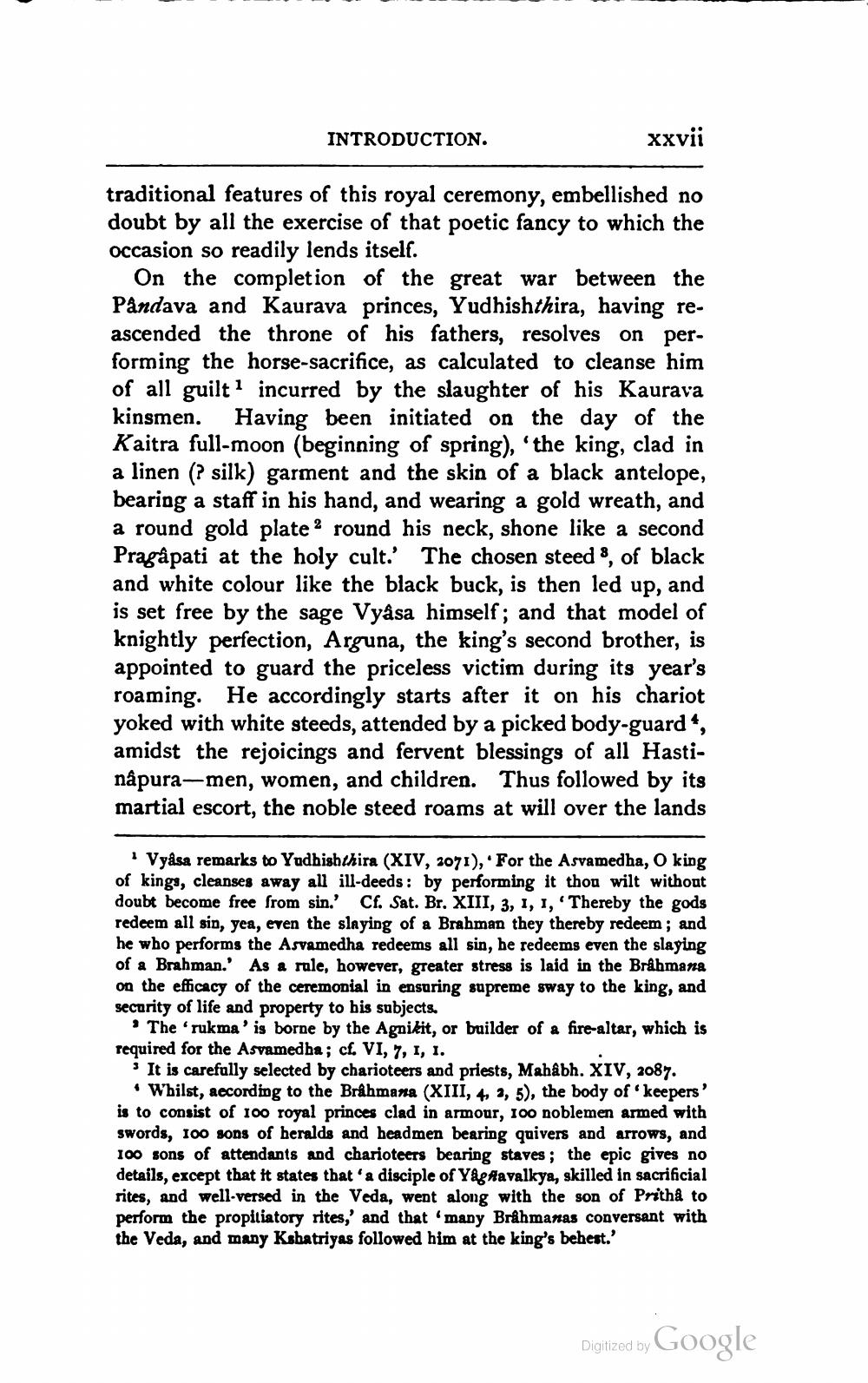________________
INTRODUCTION.
xxvii
traditional features of this royal ceremony, embellished no doubt by all the exercise of that poetic fancy to which the occasion so readily lends itself.
On the completion of the great war between the Pandava and Kaurava princes, Yudhishthira, having reascended the throne of his fathers, resolves on performing the horse-sacrifice, as calculated to cleanse him of all guilt incurred by the slaughter of his Kaurava kinsmen. Having been initiated on the day of the Kaitra full-moon (beginning of spring), 'the king, clad in a linen (? silk) garment and the skin of a black antelope, bearing a staff in his hand, and wearing a gold wreath, and a round gold plate 2 round his neck, shone like a second Prągåpati at the holy cult. The chosen steeds, of black and white colour like the black buck, is then led up, and is set free by the sage Vyasa himself; and that model of knightly perfection, Arguna, the king's second brother, is appointed to guard the priceless victim during its year's roaming. He accordingly starts after it on his chariot yoked with white steeds, attended by a picked body-guard“, amidst the rejoicings and fervent blessings of all Hastinåpura-men, women, and children. Thus followed by its martial escort, the noble steed roams at will over the lands
· Vyåsa remarks to Yudhishthira (XIV, 2071), 'For the Asvamedha, O king of kings, cleanses away all ill-deeds: by performing it thou wilt without doubt become free from sin.' Cf. Sat. Br. XIII, 3, 1, 1, 'Thereby the gods redeem all sin, yea, even the slaying of a Brahman they thereby redeem; and he who performs the Asvamedha redeems all sin, be redeems even the slaying of a Brahman.' As a rule, however, greater stress is laid in the Brahmana on the efficacy of the ceremonial in ensuring supreme sway to the king, and security of life and property to his subjects.
'The 'rukma' is borne by the Agnikit, or builder of a fire-altar, which is required for the Asvamedha; cf. VI, 7, 1, 1.
• It is carefully selected by charioteers and priests, Mahâbh. XIV, 2087.
• Whilst, aecording to the Brahmana (XIII, 4, 2, 5), the body of keepers' is to consist of 100 royal princes clad in armour, 100 noblemen armed with swords, 100 sons of heralds and headmen bearing quivers and arrows, and 100 sons of attendants and charioteers bearing staves; the epic gives no details, except that it states that a disciple of Y&ghavalkya, skilled in sacrificial rites, and well-versed in the Veda, went along with the son of Prithå to perform the propitiatory rites, and that many Brahmanas conversant with the Veda, and many Kshatriyas followed him at the king's behest.'
Digitized by Google




